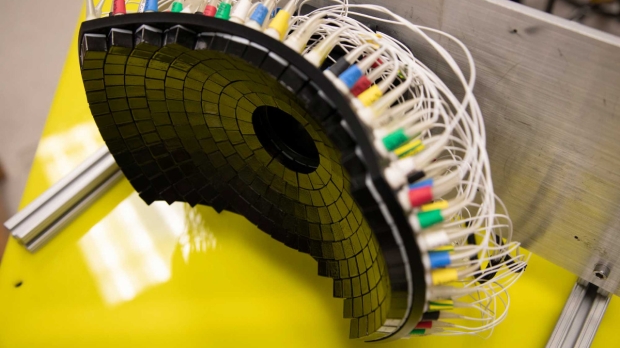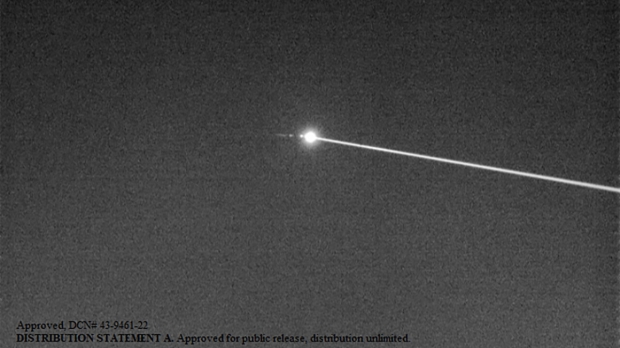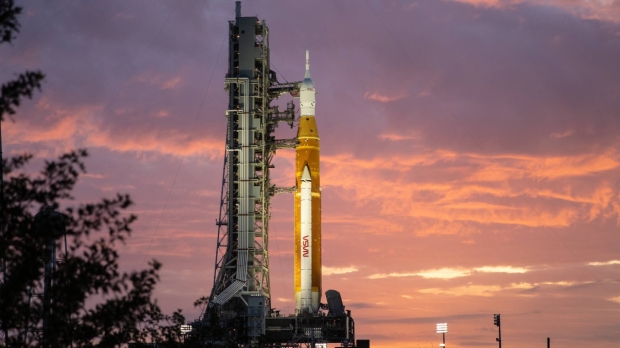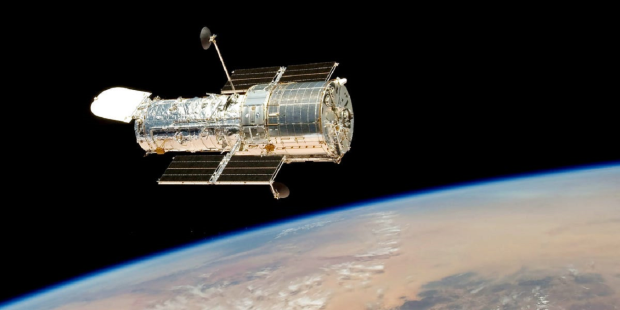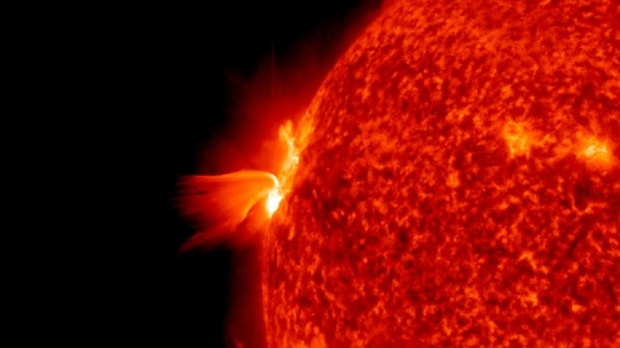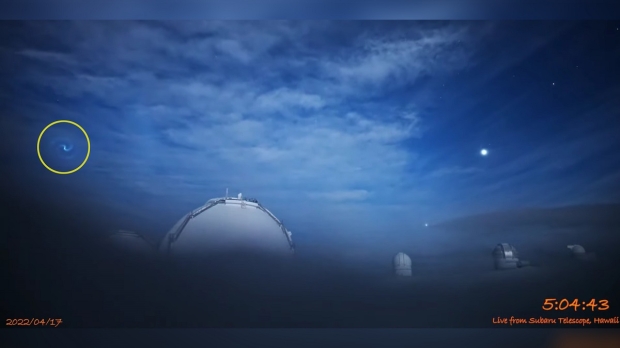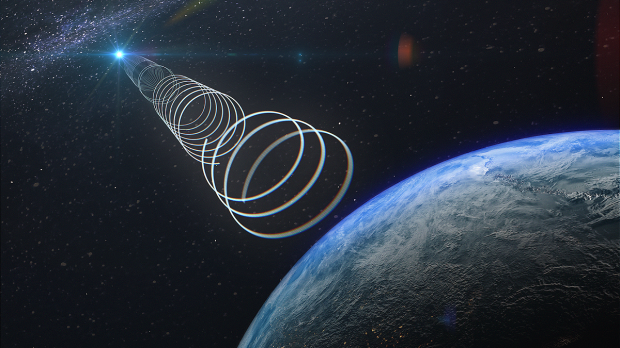Science, Space, Health & Robotics News - Page 158
Dust-covered landing craft spotted on Mars from space by NASA
NASA's Mars Reconnaissance Orbiter (MRO) satellite orbiting Mars has captured another piece of NASA equipment on the surface of the Red Planet.
An image captured by the MRO's High Resolution Imaging Science Experiment (HiRISE) shows the InSight Mars Lander about three and half years after it first landed on the planet in November 2018. The right half portion of the above image shows InSight as it was on March 9th, 2022, compared with how it was after landing on the left.
In the image taken following the landing, you can see a dark blast zone created during the landing. In the ensuing years, especially since a recent storm in January 2022, InSight and its surrounding blast zone has been covered with Martian dust.
Continue reading: Dust-covered landing craft spotted on Mars from space by NASA (full post)
75% of tumors destroyed with new machine, and they don't come back
A study on the treatment titled "Impact of Histotripsy on Development of Intrahepatic Metastases in a Rodent Liver Tumor Model" has been published in the journal Cancers.
Researchers from the University of Michigan have developed a noninvasive sound technology capable of breaking down liver tumors in rats, killing cancer cells, and spurring the immune system to prevent the further spread of cancer. The treatment is called histotripsy and utilizes focused ultrasound waves to destroy target tissues with millimeter precision.
"Histotripsy is a promising option that can overcome the limitations of currently available ablation modalities and provide safe and effective noninvasive liver tumor ablation," said Tejaswi Worlikar, a doctoral student in biomedical engineering.
Continue reading: 75% of tumors destroyed with new machine, and they don't come back (full post)
Adding gold to vaccines increases efficacy by over 25%, research shows
A study on the vaccine development titled "Enantiomer-dependent immunological response to chiral nanoparticles" has been published in the journal Nature.
An international research team found that the addition of left-handed chiral gold nanoparticles to vaccines increased their effectiveness by over 25 percent. The gold nanoparticles are added as adjuvants, molecules that boost the immune system's sensitivity to a particular antigen, where an antigen is any substance that elicits an immune response.
"The key to understanding the contribution of these nanoparticles is the concept of chirality, which applies to an object or system that can't be superimposed on its own mirror image. Everything alive on Earth is chiral. Chiral molecules can have entirely different properties depending on whether they're left- or right-handed. The two chiral forms of the same molecule are known as enantiomers," Andre Farias de Moura told Agencia FAPESP.
Continue reading: Adding gold to vaccines increases efficacy by over 25%, research shows (full post)
'Historic' laser weapon system test by US Navy destroys passing drone
In February, the U.S. Navy used an "all-electric, high-energy laser weapon" to destroy a target for the first time.
The demonstration involved a red drone flying nearby the ground-based laser system, which the test used to represent a subsonic cruise missile in flight. The weapon is the Layered Laser Defense (LLD) and was designed and built by Lockheed Martin. It homed in on the drone, firing a laser invisible to the naked eye, which caused a fiery glow and smoke to emit from the drone before it fell to the ground while deploying its parachute.
"Innovative laser systems like the LLD have the potential to redefine the future of naval combat operations. They present transformational capabilities to the fleet, address diverse threats, and provide precision engagements with a deep magazine to complement existing defensive systems and enhance sustained lethality in high-intensity conflict," said Chief of Naval Research Rear Adm. Lorin C. Selby.
Continue reading: 'Historic' laser weapon system test by US Navy destroys passing drone (full post)
NASA's moon rocket made it to the launch pad, and now it's going back
NASA's Space Launch System (SLS) and Orion spacecraft made their way onto the launchpad on March 17th.
Since then, NASA engineers have been conducting tests at the Kennedy Space Center in Florida to ensure the SLS and Orion's readiness for the upcoming uncrewed Artemis I mission to the moon. After three attempts, workers have been unable to complete the final test, a practice countdown referred to as the "wet dress rehearsal."
The repeated failure has led NASA to decide to return the SLS and Orion to the Vehicle Assembly Building (VAB), where technicians can undertake work to fix the issues plaguing the spacecraft. The major problems have been with a faulty helium check valve and a liquid hydrogen leak. The spacecraft's launch was initially slated for early June, but the setbacks may result in yet another delay for the mission.
Continue reading: NASA's moon rocket made it to the launch pad, and now it's going back (full post)
'Screaming planets' may explain one of big mysteries of the universe
Originally discovered in 2007, fast radio bursts, or as researchers refer to them, FRBs, are one of the many mysteries of the universe that are yet to be fully explained by science.
FRBs are a radio wave pulse that ranges from a fraction of a millisecond to a few milliseconds, but is estimated to release as much energy as the sun does over three days. The process of these pulses isn't yet fully understood by astronomers, but a team of scientists recently put forward a study published in the Astrophysics Journal, and it provides evidence for an explanation of these FRBs.
The team suggests that FRBs may be caused by neutron stars interacting with orbiting planets within their region. The researchers explain that the pulse of radio waves may be caused by a planet's orbit coming too close to the neutron, and as a result, the neutron stars strong gravitational pull tears parts of the planet off, causing an interaction that produces "really strong radio emissions."
Continue reading: 'Screaming planets' may explain one of big mysteries of the universe (full post)
NASA telescope photographs a monster at the heart of a distant galaxy
NASA's Hubble Space Telescope has photographed a spiral galaxy 55 million light-years away from Earth and at its heart is a monster.
NASA has taken to its blog and social channels to showcase an image taken by the Hubble Space Telescope's Wide Field Camera 3, which has honed in on a barred spiral galaxy that is approximately 55 million light-years away from Earth within the constellation Coma Berenices. The above image shows spiral galaxy M91, and while looking stunning to the eye, it's hiding an "astronomical monstrosity", according to NASA.
Much like our own galaxy, the Milky Way, M91 also contains a supermassive black hole at its center. A 2009 study using data acquired by Hubble estimated M91's black hole to weigh anywhere between 9.6 and 38 million times as much as the Sun. If you are interested in learning more about M91 or the Hubble Space Telescope, check out this link here.
Continue reading: NASA telescope photographs a monster at the heart of a distant galaxy (full post)
NASA films a major Easter solar flare that caused a radio blackout
Over the Easter holiday weekend, officials at the US Space Weather Prediction Center (SWPC) reported observing a large solar flare followed by a coronal mass ejection (CME).
NASA's Solar Dynamics Observatory recording.
On April 16 at 11:23 pm EDT, the SWPC, which is overseen by the National Oceanic and Atmospheric Administration (NOAA), confirmed an X1.1 class solar flare that was traced to sunspot regions 2994 and 2993 located on the eastern limb of the sun. According to the agency, the flare lasted for around 34 minutes and caused a brief radio blackout that NOAA has classified as an "R3 (Strong) event [that] had an associated Type II radio sweep".
Continue reading: NASA films a major Easter solar flare that caused a radio blackout (full post)
Telescope captures stunning footage of 'flying whirlpool' above Hawaii
The Subaru Telescope, located in Hawaii near Mauna Kea and situated at an altitude of 13,579 feet, has captured a video of a "flying whirlpool".
SpaceWeather.com has described the object as a "flying whirlpool," and it was spotted by the Subaru Telescope on Sunday, April 17, only hours after the launch of SpaceX's Falcon 9 rocket. LiveScience and SpaceWeather.com confirm that the "flying whirlpool" was caused by the post-deorbit-burn fuel vent of the Falcon 9 upper stage that sends it out of its orbit back down to Earth to burn up eventually.
SpaceX launched the Falcon 9 rocket carrying a classified payload for the U.S. National Reconnaissance Office (NRO) from Vandenberg Space Force Base in California on April 17. While the upper stage of the Falcon 9 isn't reusable, the first stage is, and its reusability was displayed by a few videos posted to SpaceX's official Twitter account. These videos show the first stage successfully landing atop a drone ship in the Pacific Ocean.
Continue reading: Telescope captures stunning footage of 'flying whirlpool' above Hawaii (full post)
Scientists warn that NASA may provoke aliens and cause an invasion
A team of NASA-led researchers are planning on broadcasting sensitive information about Earth into the cosmos.
The team's project is called "Beacon in the Galaxy" (BITG) and involves operating the SETI Institute's Allen Telescope array in California and China's Five-hundred-meter Aperture Spherical Radio Telescope (FAST) to broadcast information about Earth's biology, location, images of humans, solar system pictures, and an invitation for aliens to respond to the message.
The project has been opposed by researchers from the United Kingdom's Oxford University who have warned that it may not be a good idea to send out sensitive information about Earth and the human race as an alien civilizations that may receive the information may not have the best intentions. FHI scientist at Oxford, Toby Ord said that there should be a public discussion before any signals are sent out, adding that there is even dangers involved in listening to incoming messages.
Continue reading: Scientists warn that NASA may provoke aliens and cause an invasion (full post)



